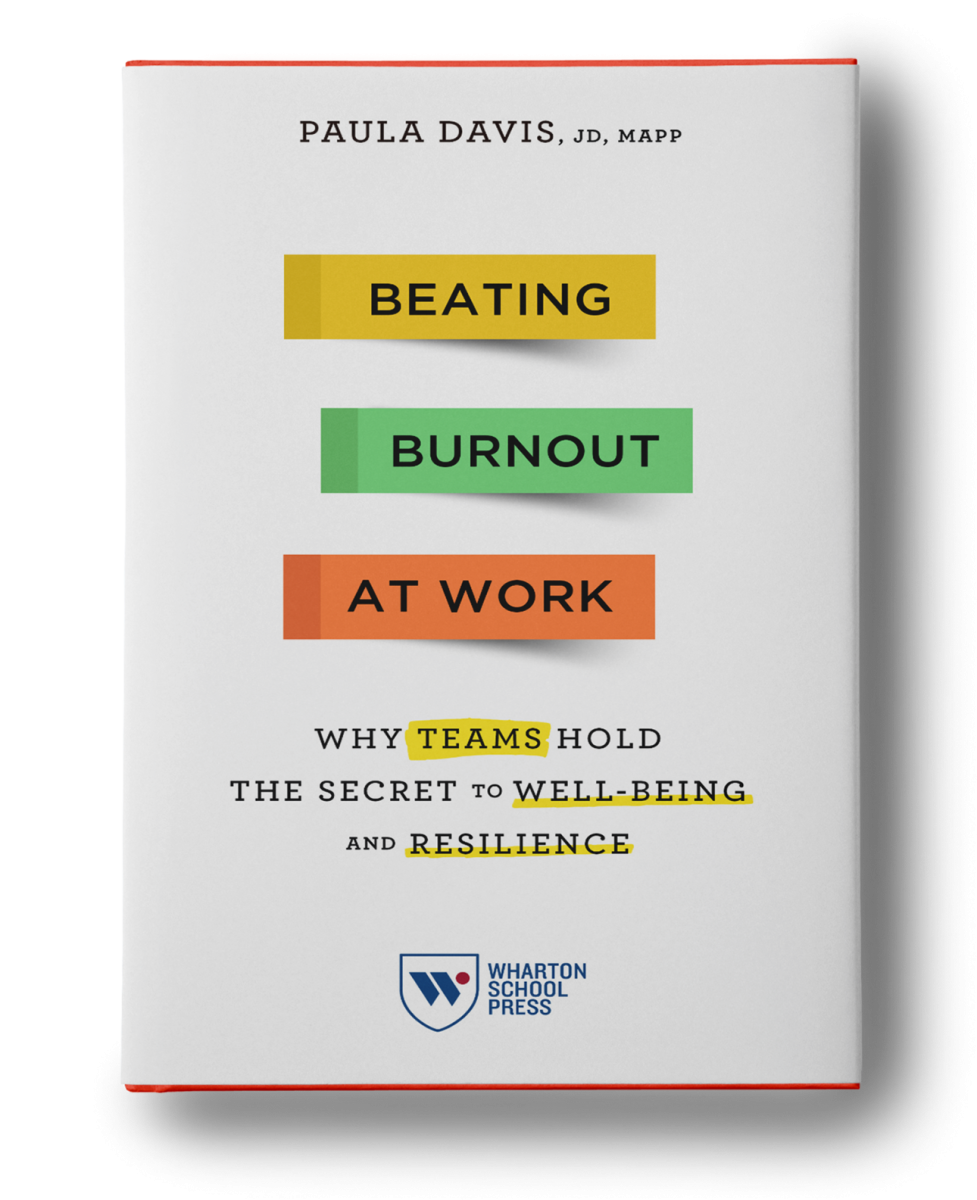People generally have reported an increase in stress, overwhelm, overwork, burnout, hitting the “pandemic wall” or whatever they choose to call this cluster of emotions and experiences. With so many people feeling other than fully charged with work, it’s important for both leaders and employees to develop a vocabulary and a practice about how to talk about stress. It’s one of the places where I went wrong in my own burnout journey – I waited entirely too long to talk to my boss about what I was feeling, and my burnout lasted a lot longer than it should have because of it.
Now, as an expert helping organizations prevent burnout at work, I am often asked the following question: How do I talk about burnout? Followed closely by, should I talk about burnout? The question is usually asked by a leader or colleague who is concerned about someone on his or her team, but also less frequently by someone who may be feeling particularly overwhelmed and is ready to say something.
Unfortunately, there can be a stigma associated with talking about stress at work, whether such stigma is real or perceived. Workplaces generally have not been great about making it comfortable to talk about stress; in fact, often times promoting and rewarding the exact opposite – a 24/7, always on mentality. But, in my interviews with many people about their own burnout experiences, every person has said to me either, “I’m so glad someone said something to me about their concern,” or “I wish somebody had cared enough to say something to me if they were concerned.”
These are some of the factors I ask leaders, teams, and employees to think about when having conversations about burnout.
Make it the norm to talk about stress with your team to begin with. New work norms created by the pandemic and return to the office policies generally are creating a lot of anxiety, frustration, and stress for workers. You should be talking about the different challenges and obstacles people are facing regularly as a team, and leaders need to model this. Normalizing the experience of stress at work helps to make the team more comfortable talking about challenges generally. It will also help to increase trust.
Do a trust check. It will be exceedingly difficult, if not impossible, to expect someone to be open about burnout if trust is not present somewhere in the work environment. Being transparent about team standards and values, inviting people to share perspectives and ideas, limiting side conversations and gossip, and simple “you matter” cues, like calling people by name and being attentive during conversations all build trust.
Be intentional and specific about the initial ask. Whether you have concerns about another person, or you feel burned out and are ready to say something, be intentional about what you want. Are you merely offering a show of support or do you need to have a more in-depth conversation? If you feel burned out, what do you need? Is it a day off (which helps, but rarely will solve your burnout long-term), a longer sabbatical, different types of assignments or work, or a switch to a new team? You have to be clear about what you’re seeking in order for the conversation to be impactful and for the right kind of help to be given.
Be intentional and specific about a back-to-work plan. I work with many people who are seeking to return to work after a period of time off to recover from burnout, and it’s rare that there is any type of formal or intentional re-entry plan in place. You can’t send someone who has just recovered from burnout back into the same workplace circumstances that caused it in the first place without a plan. Here are some questions to consider: How will the person ramp back up, and what is the right pace? How long will it take? How is their workload going to be shifted? What if the person is unable to go back to his or her pre-burnout workload?
Watch your assumptions. I recently spoke to a group of HR executives, and one of them invited me to speak to his organization. When he introduced me to the audience, he admitted that before he heard me speak, he assumed that people burned out solely because of individual traits and characteristics. Burnout is the individual manifestation of a workplace system and culture issue, and it is not a sign of weakness. Take some time to understand what burnout is and what causes it, so that you can approach the conversation with the correct mindset.
Take a “listen to learn” approach. As busy professionals, it can be tempting to offer quick solutions to the problem of stress – to jump in and fix the problem. Yet, burnout is rarely solved with quick fixes, and when misapplied, can even do more harm than good. Talking about stress and burnout should be a two-way conversation. Leaders really need to understand team members’ perspectives without defensiveness. Team members really need to understand that there may be limits to the ways in which leaders can help. Here are a few sentence starters that can help all parties approach a conversation with humble curiosity:
- Help me understand…
- Walk me through that…
- Tell me more/say more about that…
- I’m wondering…
All of these phrases invite a deeper conversation and help limit defensiveness.
Talking about stress and burnout isn’t easy for most people, but there are many ways teams, leaders, and organizations can improve to increase the likelihood that these vital conversations happen. Burnout is linked to rates of errors and safety issues, turnover, absenteeism, and decreased productivity. In addition, burnout can open the door to a host of mental and physical health-related consequences. There is too much at stake to remain silent.
Please click here to order my new book, Beating Burnout at Work: Why Teams Hold the Secret to Well-Being and Resilience.







